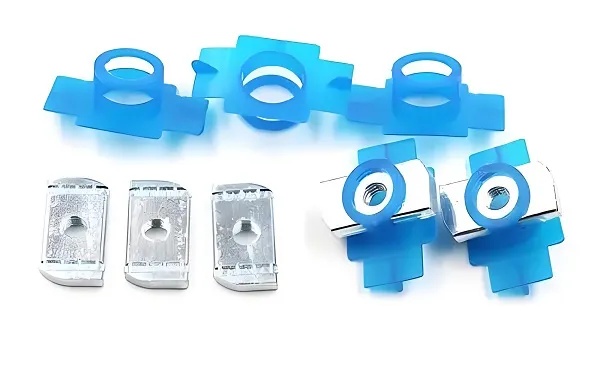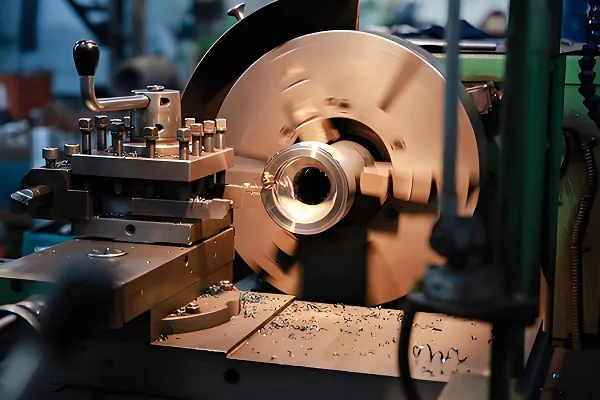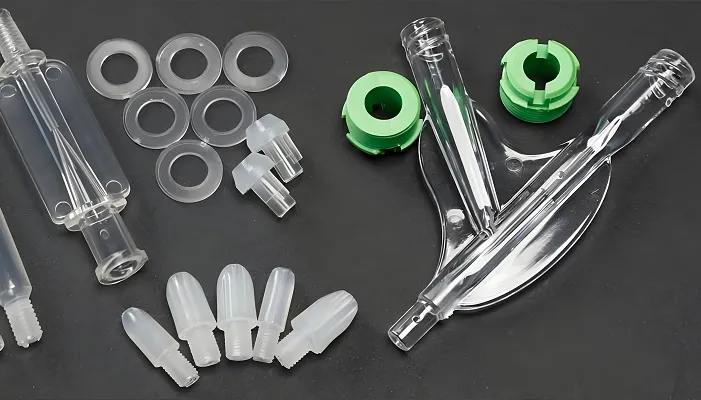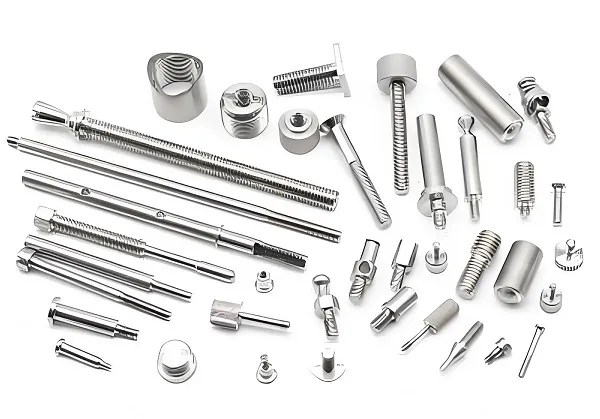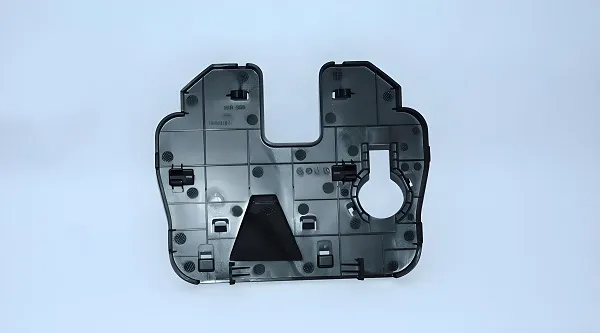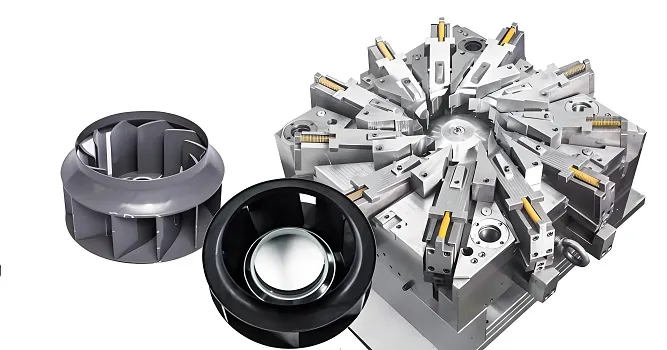Aluminum Stamping Parts Overview
Aluminum stamping transforms lightweight, corrosion-resistant aluminum sheets into precise components using high-pressure dies and presses. Custom aluminum stamping parts deliver exceptional strength-to-weight ratios, electrical/thermal conductivity, and design flexibility for specialized applications. Ideal for high-volume production, this process achieves complex geometries with tight tolerances (±0.1mm) while minimizing material waste. From aerospace brackets to electronic enclosures, custom aluminum stamping combines efficiency with performance, offering sustainable solutions through recyclability and energy-efficient manufacturing.
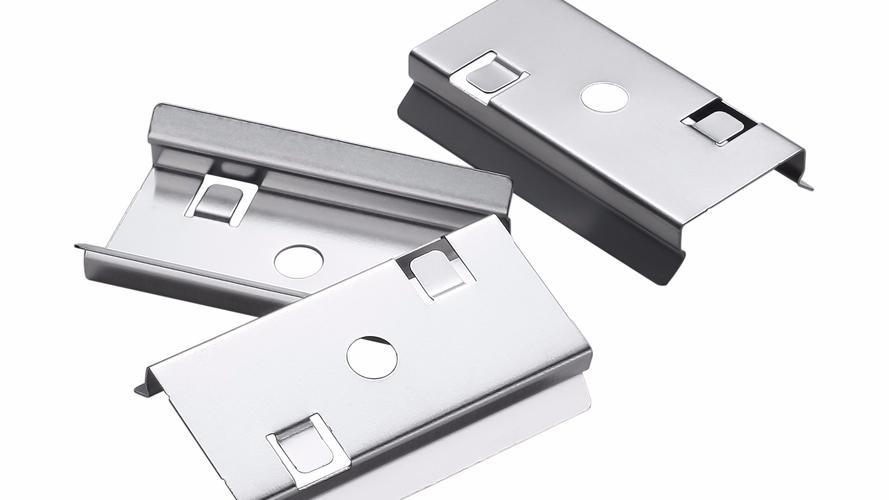
Why Custom Aluminum Stamping Parts?
-
Weight Optimization: Replace heavier metals without sacrificing strength – critical for aerospace, EVs, and portable devices.
-
Corrosion Resistance: Naturally oxide-forming properties eliminate costly plating for outdoor/medical applications.
-
Thermal/Electrical Conductivity: Essential for heat sinks, battery components, and electrical enclosures.
-
Design Complexity: Achieve intricate shapes (deep draws, multi-axis bends) unattainable with machining or casting.
-
Cost Efficiency: Near-zero scrap rates and high-speed production (>1,000 parts/hour) reduce unit costs by 40-60% at scale.
-
Sustainability: 100% recyclable material with lower production energy vs. steel or plastic.
Aluminum Stamping Parts Processing Technology
-
Progressive Die Stamping: Dominant for complex, high-volume parts (e.g., connector pins, shielding cans) with integrated piercing/bending.
-
Transfer Stamping: Handles larger parts (e.g., automotive panels) using robotic part transfer between stations.
-
Fine Blanking: Delivers optical-edge quality (±0.025mm) for surgical tools or precision mechanisms.
-
Multi-Slide Stamping: Forms multi-directional bends in single operations (e.g., clips, springs).
-
Hydroforming: Uses fluid pressure for seamless, wrinkle-free deep draws (e.g., cookware, tanks).
-
Anti-Galling Protocols: Teflon-coated dies/punches and specialized lubricants prevent aluminum adhesion.
Aluminum Stamping Parts Processing Flow
-
Design/DFM Review: Optimize radii (≥2x material thickness), hole spacing, and bend allowances for aluminum’s springback.
-
Tooling Engineering: Design carbide inserts for high-wear areas; simulate forming to predict springback.
-
Prototyping: Test with soft tooling or CNC to validate form/fit.
-
Material Prep: Uncoil and level sheets to eliminate internal stresses.
-
Stamping: Press forces (20-2,000 tons) adjusted for aluminum’s lower ductility vs. steel.
-
Secondary Operations:
-
Deburring: Abrasive flow machining for internal edges
-
Surface Treatment: Anodizing (Type II/III), powder coating, or chemical conversion
-
Heat Treatment: T4/T6 tempering for enhanced strength
-
-
Automated QC: Vision systems check dimensions; eddy current testing verifies material integrity.
Aluminum Stamping Parts Materials
| Alloy Series | Key Properties | Common Tempers | Applications |
|---|---|---|---|
| 1xxx (e.g., 1100) | High conductivity, formability | O, H14 | Heat sinks, decorative trim |
| 3xxx (e.g., 3003) | Moderate strength, weldability | H12, H14 | Cookware, HVAC components |
| 5xxx (e.g., 5052) | Marine-grade corrosion resistance | H32, H34 | Boat fittings, fuel tanks |
| 6xxx (e.g., 6061) | Heat-treatable, structural | T4, T6 | Aerospace frames, robotic arms |
*Avoid 2xxx/7xxx series for stamping – low formability risks cracking.*
Aluminum Stamping Parts Applications
-
Aerospace: Seat tracks, wing ribs, antenna housings (Alloy 7075-T6)
-
Electronics: EMI/RF shields, SSD enclosures, 5G heat spreaders (Alloy 5052-H32)
-
Electric Vehicles: Battery trays, motor housings, charge ports (Alloy 6061-T6)
-
Medical: MRI components, surgical instrument trays (Alloy 3003-O)
-
Renewables: Solar panel frames, inverter heat sinks (Alloy 6063-T5)
Aluminum Stamping Parts Performance Enhancement
-
Anodizing:
-
Type II: 5-25µm thickness for corrosion resistance
-
Type III (Hardcoat): 50-100µm for abrasion resistance
-
-
Precision Coining: ±0.01mm tolerance control for sealing surfaces.
-
Laser Welding: Seamless joins for hermetic enclosures.
-
KTL Coating: Cathodic electrocoating for automotive corrosion protection.
-
Grain Structure Control: Annealing between stages for deep-drawn parts.
Aluminum Stamping Parts Common Questions
Q: How to prevent cracking during bending?
A: Use “O” temper for tight bends; maintain bend radius ≥1.5x thickness for T6 alloys.
Q: Why does surface finish vary between alloys?
*A: 5xxx series exhibits “orange peel” texture; specify bead-blasted finish for uniformity.*
Q: Minimum achievable wall thickness?
A: 0.3mm for most alloys; 0.15mm possible with specialized tooling.
Q: Can stamped aluminum match CNC precision?
*A: Yes – fine blanking achieves IT9-IT10 tolerances (±0.02mm).*
Q: How to reduce springback?
*A: Overbending by 2°-5°, bottoming dies, or post-strike coining.*
Transform Your Vision into High-Performance Aluminum Solutions!
From prototyping to million-unit runs, our aluminum stamping expertise delivers:
✅ Material Science Guidance – Alloy/temper selection for your application
✅ Springback-Compensated Tooling – Precision beyond industry standards
✅ Sustainable Manufacturing – Zero wastewater anodizing, 100% scrap recycling
Request a Free DFM Analysis Today!
→ Upload your CAD file for instant tooling cost estimation
→ Get alloy recommendations based on mechanical/environmental needs
→ Access our anodizing color library for custom finishes
Contact us within 24 hours for a feasibility study + sample lead time!
📧 charlie@plasticmetalparts.com | 📞 +86-18150097490

